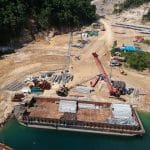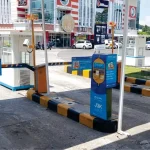Liga Asuransi – Dear readers, how are you? Hopefully, your business will run smoothly this year.
Let’s continue discussing risk management and insurance in DATA CENTRE.
In line with the rapid world’s changing, we need information technology to establish faster communication, maintain electronic storage, and protect records. Simply, IT makes an electronic storage system to protect the company’s records.
If previously data was stored on a personal computer, now data can be stored in a storage centre with a substantial capacity. This facility can not only store data but can also process it into quality information.
As an insurance broker and consultant, this time, we want to discuss risk management and insurance related to data centres. If you are interested in this article, please share it with your colleagues so they understand like you.
What are Data Centre Architecture Components?
Data centres have three primary components: computing, storage, and network. However, these components are only the tip of the iceberg in a modern DC. Beneath the surface, support infrastructure is essential to meeting the service level agreements of an enterprise data centre.
- Data Centre Computing
Servers are the engines of the data centre. On servers, the processing and memory used to run applications may be physical, virtualized, distributed across containers, or distributed among remote nodes in an edge computing model.
Data centres must use processors that are best suited for the task, e.g., there may be better choices than general-purpose CPUs to solve artificial intelligence (AI) and machine learning (ML) problems.
- Data Centre Storage
Data centres host large quantities of sensitive information, both for their purposes and the needs of their customers. Decreasing storage media costs increases the amount of storage available for backing up the data locally, remotely, or both—advancements in non-volatile storage media lower data access times. In addition, as in any other software-defined storage technologies increase staff efficiency for managing a storage system.
- Data Centre Networks
Datacentre network equipment includes cabling, switches, routers, and firewalls that connect servers to the outside world.
Properly configured and structured, they can manage high traffic volumes without compromising performance.
A typical three-tier network topology comprises core switches at the edge connecting the data centre to the Internet and a middle aggregate layer connecting the core layer to the access layer where the servers reside. Advancements, such as hyper-scale network security and software-defined networking, bring cloud-level agility and scalability to on-premises networks.
Why Indonesia needs more Data Centres?
As a newly industrialized country, Indonesia has always been compared to its neighboring countries like Singapore, Malaysia, and Thailand. However, five socioeconomic factors make Indonesia attractive despite its status as a developing country.
Stable Economic Growth
The economy of Indonesia is the largest in Southeast Asia and is one of the world’s emerging market economies. With a GDP of USD 3,2 trillion in 2020, Indonesia’s annual GDP growth has remained relatively stable at around 5%.
Although the country went into recession in 2020, it has been recovering and successfully exited the crisis in the second quarter of 2021.
Digital Infrastructure Fast Development
As mentioned by The World Bank, Indonesia’s economic planning follows a 20-year development plan, which is segmented into 5-year medium-term plans.
The current medium-term development plan is the last phase of the long-term project. It aims to further strengthen Indonesia’s economy by improving its competitiveness in the global market.
One of the government’s priorities is to develop the digital infrastructure in Indonesia and accelerate digital transformation. For example, Jakarta is on the path of the newly installed INDIGO cable system, the subsea fiber optic cables linking Singapore to Sydney through Jakarta and Perth.
Using today’s coherent optical technology, the cable system promises lower latency and enhanced reliability.
Large User Base
Because proximity to end users is a critical data centre location criterion, most data centres are built in the areas where people are.
With over 270 million people, Indonesia is the fourth most populous country in the world and the largest in Southeast Asia, offering businesses of various industries a large potential user base.
Moreover, as of 2020, 54% of its population are Gen Z and Millennials, technology-savvy and entirely at ease with an evolving and digital-centric world.
High Internet Penetration Rate
According to Statista, with over 171 million internet users, Indonesia is one of the biggest online markets worldwide. As of July 2021, online penetration in the country stood at around 70%.
Popular online activities include mobile messaging and social media, and the most popular social network in Indonesia is YouTube, with around 94% of the online population using the platform. In 2020, on average, people spent 8 hours 52 minutes daily using the internet, ranking the country eighth globally.
The Rise of Digital Opportunities
Indonesia has seen the rapid growth of various digital platforms: user-generated content platforms, social media platforms, OTT content providers, e-commerce platforms, digital payment systems, etc.
For example, although e-commerce was considered an optional business move, retailers today have realized that online shopping is an increasingly popular choice for many customers in Indonesia.
That is why Indonesia has emerged as the global leader of online shopping. The number of users in the country has been growing significantly since 2020 and is expected to continue to grow by 60% by 2025.
What are the risks of Data Centres?
Perhaps you might hear a few years ago that the fire that burned down the OVH data centres in Strasbourg, France, in March recently proved to be a big wake-up call for facility managers around the globe.
The financial impact of the fire is not for the faint-hearted; according to Reuters, it is estimated to have cost the company 130million euros after factoring in lost revenue, litigation provisions, impairment charges, and the cost of reimbursing customers (opens in new tab) and replacing equipment.
The essential Power Supply for Data Centre
Usually, there are systems to ensure uninterrupted power supply in a data centre, but these must be regularly serviced and monitored. This requires a monitoring (opens in new tab) solution that can check standard power supply as well as UPS (opens in new tab) systems to make sure that every single part of the power supply system is working correctly and that any failure or performance issue is immediately detected and solved.
Here are five steps every data centre or facility manager should consider implementing to ensure an adequate power supply:
- Gather the right information
The first step is to measure and analyze the power supply and total electricity to the data centre.
IT and air conditioning should be measured separately. Through these measurements, the efficiency of the cooling in the data centre can be measured. This key figure is called PUE.
The quality should also be recorded using an appropriate measuring device. For fail-safety, an active UPS should provide the power supply, and N+1 redundancy should also be available.
- Safety first
A well-maintained power supply ensures the safe protection of data. To provide an effective operating system, a permanent measurement and monitoring of the residual current of the data centre must be carried out according to international standards.
If the power failure should be longer, this can be absorbed with the mains backup (opens in new tab) system. The backup power system should be permanently monitored with a network monitoring solution that must be continuously operational and available within a few minutes.
It is also advisable to set up alerts so the facility manager can be notified of any issues with the power supply even when they aren’t on-site.
- Check the power distribution
Make sure the power is made available to the IT components. This distribution takes place via the power distribution unit (PDU). During this process, important information can be collected from the PDU, such as:
What’s the power/heat load for the rack?
How much power is needed for the servers (opens in new tab)?
Is an integrated differential current measurement possible?
- Put a monitoring strategy in place
Because of the complexity of the points mentioned above, monitoring the power supply and the overall environment of the data centre is crucial. It’s essential to understand the condition and status of servers and machines in the data centre that all air conditioning units are functioning correctly, and the air temperature in the facility, to name just a few metrics.
In addition, they need to measure the KPIs that were defined in the first step. For this, they need a sufficiently complex monitoring tool that can bring in data from sensors, OT systems, and traditional IT components using several standard protocols and display everything in one place.
- Prevent cyberattacks
Currently, most of the power equipment can be controlled and configured remotely. This leaves the data centre wide open to potential hacks, downtime, or devastating data loss (opens in new tab).
Hackers can also cause a power surge, damage equipment or a fire outbreak. In 2017, British Airways suffered from a deliberate power surge that lasted a few minutes but cost them dearly as the incident affected around 75,000 travelers. It is estimated that this cost the company a staggering £80 million.
Types of insurance related to Data Centre
To protect business owners from financial loss caused by accidents happen to the Data Center, the following are the types of insurance that are recommended to take by the owners:
Cyber Insurance
As enterprises become increasingly interconnected, cyber insurance for data centers is becoming a priority and a best practice.
Some even believe cyber insurance for data centers will be mandatory in the future, but cyber insurance is getting more and more expensive.
Data center operators should have cyber insurance and follow security best practices, but they should be careful to choose policies that best fit their needs.
For a data center, cyber insurance should be as much a priority as fire insurance. Still, many companies need to know what they need or whether their existing policies cover them.
A cyber insurance policy helps a data center minimize the financial impact of a breach, attack, or outage.
But data center operators should be aware that not all cyber insurance policies are created equal and choose ones that best fit their needs.
Property All Risks Insurance
Property All Risks insurance covers loss arising from any fortuitous cause except those expressly excluded.
This policy covers all risks of physical loss, destruction, or damage to the insured Data Centre property which occurred during the policy’s period and is subject to specific terms, conditions, and exclusions.
- The following extensions are available under the Property All Risks Insurance Policy:
- Fire, lightning, explosion, and falling aircraft.
- Natural perils such as floods, typhoons, tempests, water-damaged, earthquakes, volcanic eruptions, tsunami
- Riot, strike malicious damage.
- Impact and accidental damage
Electronic Equipment Insurance (EEI)
Electronic Equipment Insurance (EEI) is a policy designed to provide computer and electronic equipment, including data centres. It applies whether the insured items are at work or rest or being dismantled for cleaning, overhauling, or being shifted within the premises during the operations above themselves,
The risks during subsequent re-erection, but in any case, only after successful commissioning. The policy can also cover external data media such as tapes and disks.
Insurance Coverage
The cover is an “Accident” insurance policy covering losses to the insured items due to sudden and unforeseen causes. The policy includes a mechanical and electrical breakdown of the equipment unless such a breakdown is indemnified under the manufacturer’s warranty or a maintenance contract.
Business Interruption Insurance
Business interruption insurance is insurance coverage that replaces business income lost in a disaster. The event could be, for example, a fire or a natural disaster. Business interruption insurance is not sold as a separate policy. Still, it is either added to a property/casualty policy or a comprehensive package policy as an add-on or rider.
Public Liability Insurance
Public Liability insurance is designed to protect you and your business if a customer, supplier, or a public member brings a claim against you due to them being injured or sustained property damage because of your negligent business activities.
How to arrange insurance for DATA CENTRE In Indonesia?
As we have described above, we can see that the risk of data centers is high, so it special takes effort to get the best insurance coverage with extensive guarantees, competitive premiums, and guarantees by healthy insurance companies.
So, it is best to use the services of an insurance broker company. An insurance broker is an insurance expert who is on your side.
Insurance brokers design insurance programs according to your needs, negotiating with some of the best insurance companies in Indonesia and abroad to get extensive guarantees and competitive premium rates.
The duties of the insurance broker are most important when an accident occurs and take care of claims. The insurance broker will help you from the day of the incident to the realization of the payment.
The insurance broker also acts as your advocate to take care of claims. Insurance brokers are experts in understanding the contents of insurance policies to avoid requirements and information that can affect the outcome of claims.
One insurance broker in Indonesia with extensive experience is L&G Insurance Broker.
For all your insurance coverage needs, contact L&G now!
Sources:
- https://www.neucentrix.co.id/en/news/128-five-reasons-why-indonesia-is-an-attractive-country-for-data-centre-investment
- https://www.globenewswire.com/news-release/2022/06/20/2465635/0/en/Indonesia-Data-Centre-Market-to-Witness-Investment-of-42-4-Billion-by-2027-Over-3-36-Billion-will-be-Invested-in-Core-Shell-Development-Services-across-Indonesia-During-2022-2027-A.html
- https://www.thejakartapost.com/business/2023/01/09/investment-boom-in-indonesias-data-centres-to-continue-in-2023.html
- https://jakartaglobe.id/tech/equinix-expands-to-indonesia-with-74m-data-centre-investment
- https://www.checkpoint.com/cyber-hub/cyber-security/what-is-data-centre/#:~:text=Data%20centres%20are%20made%20up,of%20an%20enterprise%20data%20centre
- https://www.techradar.com/features/the-importance-of-effective-power-supply-for-data-centres
—
LOOKING FOR INSURANCE PRODUCTS? DON’T WASTE YOUR TIME AND CALL US RIGHT NOW
24 HOURS L&G HOTLINE: 0811-8507-773 (CALL – WHATSAPP – SMS)
website: lngrisk.co.id
E-mail: customer.support@lngrisk.co.id
—













